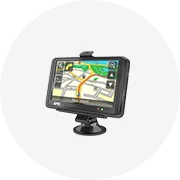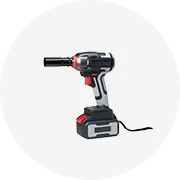Types of Bumper Stands
A bumper stand is a specialized tool used to hold a vehicle's bumper in place during repair, modification, or display. Understanding the different types available helps in selecting the right one for your specific needs.
Portable Bumper Stand
Lightweight and easy to carry, ideal for mobile mechanics who work on-site or in different locations.
Key features: Aluminum or steel construction, folding frames for compact storage, high portability
Adjustable Bumper Stand
Features height and width adjustments to accommodate different vehicle sizes and bumper shapes.
Key features: Telescoping legs, removable arms with pins, versatile usage across vehicle models
Welders Bumper Stand
Specially designed with features for holding bumpers during welding operations.
Key features: Clamps or fixtures for precise positioning, protective pads to prevent damage to finish
Rotating Bumper Stand
Allows full 360° access to all sides of the bumper for detailed work or accessory installation.
Key features: Turntable or swivel mechanism, locking mechanisms for desired positioning
Collapsible Bumper Stand
Designed for easy storage and transportation while minimizing space requirements.
Key features: Folding legs, removable components, ideal for mobile use or limited space
Heavy-Duty Bumper Stand
Built to support large and heavy bumpers from trucks and commercial vehicles.
Key features: Robust construction, high weight capacity, large wheels for mobility
Pro Tip: When selecting a bumper stand type, consider not only your current vehicle's requirements but also any future projects. Investing in an adjustable or versatile stand can save money in the long run by accommodating a wider range of bumpers.
| Bumper Stand Type | Best For | Key Advantages | Typical Weight Capacity |
|---|---|---|---|
| Portable | Mobile mechanics, on-site repairs | Lightweight, easy transport | 75-150 lbs |
| Adjustable | Multi-vehicle repair shops | Versatility, adaptability | 100-200 lbs |
| Welders | Body shops, custom modifications | Stability during welding, surface protection | 150-250 lbs |
| Rotating | Detailed work, accessory installation | 360° access, precision positioning | 100-200 lbs |
| Collapsible | Limited workspace environments | Space-saving, easy storage | 75-150 lbs |
| Heavy-Duty | Commercial vehicles, trucks | Strength, stability for large bumpers | 250-500+ lbs |
Specifications and Maintenance of Bumper Stands
Understanding the technical specifications and proper maintenance procedures ensures optimal performance and longevity of your bumper stand.
Key Technical Specifications
Standard size typically measures around 1m W x 2.2m H, though customizable options can extend to 3m H for larger displays. Larger stands attract more attention due to increased graphic visibility.
Weight varies by type: roller stands weigh approximately 4-6 kg, while X-frame stands are significantly lighter at 1-3 kg. Despite weight differences, all models maintain portability for transport between locations.
Frames typically consist of aluminum or steel for durability, while graphics utilize PVC, fabric, or vinyl materials. Material selection impacts both durability and overall weight of the stand.
Print sizes vary by model: roller stands accommodate approximately 85cm W x 200cm H graphics, while L-frame stands typically fit 60cm W x 160cm H displays.
Most stands offer adjustable height settings, variable graphic sizes, and frame color options to match brand identity and specific promotional needs.
Pricing varies based on type, features, and customization options. Roller stands typically command higher prices than simpler designs like L-frame models.
Essential Maintenance Procedures
| Maintenance Task | Frequency | Procedure | Importance |
|---|---|---|---|
| Cleaning | After each use | Use soft cloth with mild soap solution; avoid abrasive cleaners that can damage surfaces | High |
| Storage | When not in use | Store in dry place away from direct sunlight; avoid placing heavy objects on top | High |
| Inspection | Monthly | Check for damage, loose parts, or wear; address issues immediately | Medium |
| Proper Usage | Continuous | Use stand only for intended purpose; avoid exceeding weight limits | High |
| Hardware Check | Quarterly | Tighten any loose bolts or screws; replace if damaged | Medium |
| Graphic Care | As needed | Clean graphics with appropriate solutions; store rolled rather than folded | Medium |
Maintenance Tip: Regularly inspect connection points and moving parts for signs of wear. Applying a light silicone-based lubricant to hinges and joints can extend the lifespan of your bumper stand while ensuring smooth operation during setup and breakdown.
How to Choose the Right Bumper Stand
Selecting the ideal bumper stand requires careful consideration of several key factors to ensure it meets your specific needs and provides reliable performance.
Purpose and Usage Environment
Consider where and how you'll use the stand: trade shows, outdoor events, retail settings, or automotive repair shops each have unique requirements.
Selection tip: Indoor displays may prioritize aesthetics, while outdoor usage demands weather resistance and stability
Design and Size Considerations
The stand's dimensions should be proportionate to your display space and the message you're conveying. Properly sized stands create visual impact without overwhelming surroundings.
Selection tip: Measure your available space before purchasing to ensure proper fit
Portability Requirements
For users who frequently transport their displays, lightweight designs with easy assembly are essential. Look for quick-setup features and included carrying cases.
Selection tip: Consider total transport weight including the stand, graphics, and accessories
Stability and Durability
Especially critical for outdoor use or high-traffic areas, evaluate the stand's construction quality and base stability to prevent tipping or damage.
Selection tip: Check weight ratings and wind resistance specifications for outdoor models
Expert Advice: When choosing between bumper stand models, consider your long-term needs rather than just immediate requirements. Investing in a slightly more versatile or higher-quality stand initially can save money and frustration in the future as your display needs evolve.
Additional Selection Criteria
| Selection Factor | What to Consider | Importance Level |
|---|---|---|
| Graphics Quality & Compatibility | Print resolution, color accuracy, and material compatibility with your stand | High |
| Adjustability & Versatility | Height adjustments, angle modifications, and adaptability for different materials | Medium-High |
| Budget Constraints | Total cost including the stand, graphics, shipping, and any customization | High |
| Supplier Reputation | Customer reviews, warranty options, and after-sales support | Medium-High |
| Setup Time & Complexity | Time required for assembly and whether special tools or multiple people are needed | Medium |
| Replacement Parts Availability | Ease of finding replacement components if something breaks | Medium |
DIY Installation and Replacement Guide
Replacing or installing a bumper stand can be accomplished without professional help, saving time and money. Follow this step-by-step guide for a successful DIY project.
Bumper Stand Replacement Process
-
Assess the Damage
Thoroughly examine the bumper condition to determine if repair is possible or replacement is necessary. Identify which bolts need to be removed and note their positions for reassembly.
-
Gather Necessary Tools
Collect all required equipment: ratchet set, socket set, screwdrivers, penetrating oil for stuck bolts, and the replacement bumper stand if needed.
-
Safely Elevate the Vehicle
Use a hydraulic lift or appropriate jack stands to raise the vehicle to a comfortable working height. Ensure the vehicle is stable before proceeding underneath.
-
Remove the Existing Bumper Stand
Locate and remove the mounting bolts using the appropriate socket or wrench. Apply penetrating oil to rusty or stuck fasteners and allow it to work before attempting removal.
-
Install the New Bumper Stand
Position the new stand, aligning it precisely with the mounting points. Insert and tighten all bolts according to manufacturer specifications, ensuring secure attachment.
-
Verify Proper Alignment
Lower the vehicle and inspect the bumper alignment from multiple angles. Make any necessary adjustments to ensure proper positioning and fit.
-
Perform Final Safety Checks
Double-check all connections, ensuring bolts are properly torqued and the bumper is securely attached before driving the vehicle.
Safety Reminder: Always prioritize safety when working under a vehicle. Use proper jack stands rated for your vehicle's weight, never rely solely on a hydraulic jack, and work on level ground. Consider having a helper present during the installation process.
Common Tools Required
| Tool | Purpose | Alternatives |
|---|---|---|
| Socket Set | Removing and installing bolts of various sizes | Adjustable wrench (less ideal) |
| Ratchet with Extensions | Accessing hard-to-reach bolts | Flex-head ratcheting wrenches |
| Torque Wrench | Ensuring proper bolt tightness | Regular wrench (less precise) |
| Penetrating Oil | Loosening rusted or seized fasteners | WD-40 or homemade solutions |
| Jack and Jack Stands | Safely elevating the vehicle | Vehicle ramps (for some applications) |
| Work Light | Illuminating the work area | Flashlight or headlamp |
Frequently Asked Questions
A bumper stand is a versatile display tool designed to hold banners, posters, or graphics in an upright position. In automotive applications, it's a specialized tool that holds a vehicle's bumper during repair or modification processes. For marketing purposes, it features graphics that promote brands, products, or services with high visibility.
Bumper stands are incredibly versatile and can be utilized in numerous environments including:
- Trade shows and exhibitions
- Retail environments and shopping malls
- Corporate events and conferences
- Auto repair shops and body shops
- Car dealerships and showrooms
- Airport and transportation hubs
- Product launches and promotional events
Their portable nature makes them ideal for both temporary installations and semi-permanent displays.
There are several distinct types of bumper stands, each designed for specific applications:
| Type | Description | Best For |
|---|---|---|
| Retractable Stands | Feature roll-up mechanisms for easy transport | Frequent travelers, trade shows |
| Telescopic Stands | Adjustable height for versatile displays | Multi-purpose usage, varying venues |
| L-Frame Stands | Simple L-shaped design for lightweight displays | Budget-conscious users, temporary displays |
| X-Frame Stands | Collapsible X-shaped support structure | Quick setup needs, portable applications |
| Portable Stands | Lightweight with folding frames | Mobile mechanics, on-site repairs |
| Heavy-Duty Stands | Robust construction for large vehicles | Commercial vehicles, trucks |
Proper maintenance significantly extends the useful life of your bumper stand:
- Regular Cleaning: Wipe down frame and components with mild soap solution and soft cloth after each use, avoiding harsh chemicals that could damage finishes
- Proper Storage: Store in dry, climate-controlled environment away from direct sunlight when not in use
- Periodic Inspection: Check for loose components, wear points, or damage monthly
- Hardware Tightening: Periodically check and tighten any loose screws or bolts
- Graphic Care: Roll rather than fold graphics when storing to prevent creasing
- Lubrication: Apply appropriate lubricant to moving parts annually or when stiffness is noticed
Key considerations for selecting the right bumper stand include:
- Intended Use: Consider where and how frequently you'll be using the stand
- Size and Weight: Ensure the dimensions and weight capacity meet your specific requirements
- Material Quality: Look for durable materials like aluminum or steel for longevity
- Ease of Assembly: Consider how quickly and easily the stand can be set up and taken down
- Portability: For frequent transportation, prioritize lightweight and compact designs
- Budget: Balance cost with quality and features that meet your needs
- Warranty: Check manufacturer warranty terms for protection against defects



















































